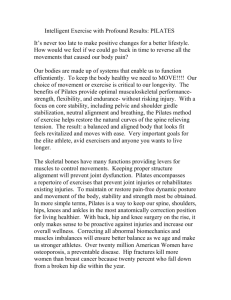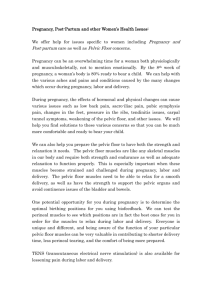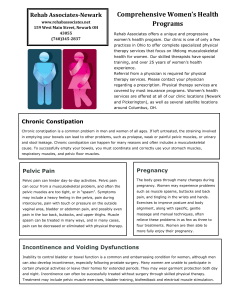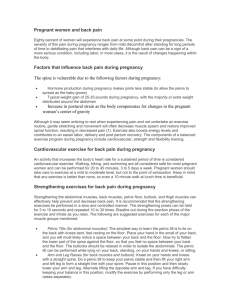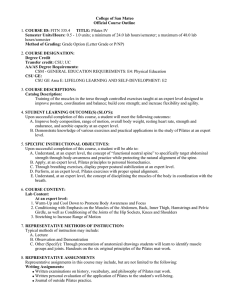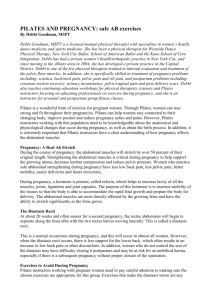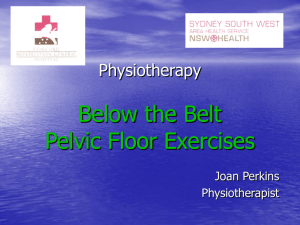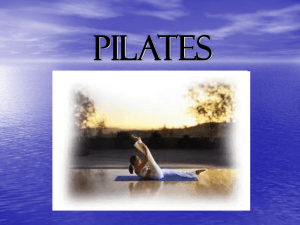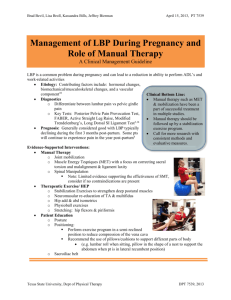Pilates throughout Pregnancy Part 2
advertisement
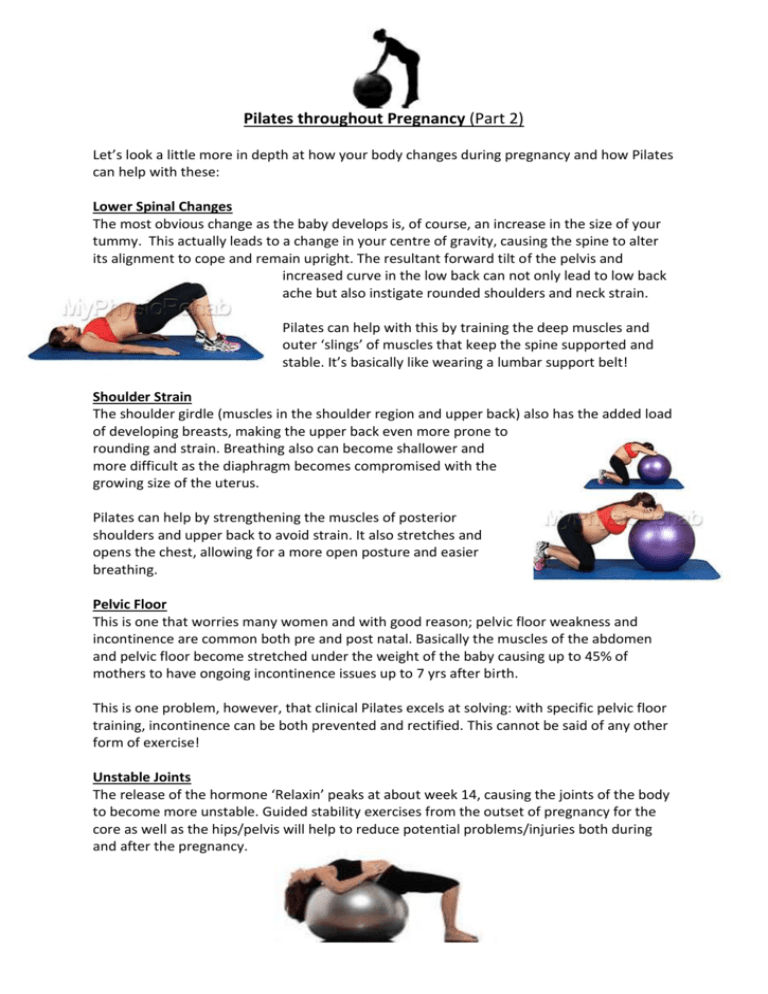
Pilates throughout Pregnancy (Part 2) Let’s look a little more in depth at how your body changes during pregnancy and how Pilates can help with these: Lower Spinal Changes The most obvious change as the baby develops is, of course, an increase in the size of your tummy. This actually leads to a change in your centre of gravity, causing the spine to alter its alignment to cope and remain upright. The resultant forward tilt of the pelvis and increased curve in the low back can not only lead to low back ache but also instigate rounded shoulders and neck strain. Pilates can help with this by training the deep muscles and outer ‘slings’ of muscles that keep the spine supported and stable. It’s basically like wearing a lumbar support belt! Shoulder Strain The shoulder girdle (muscles in the shoulder region and upper back) also has the added load of developing breasts, making the upper back even more prone to rounding and strain. Breathing also can become shallower and more difficult as the diaphragm becomes compromised with the growing size of the uterus. Pilates can help by strengthening the muscles of posterior shoulders and upper back to avoid strain. It also stretches and opens the chest, allowing for a more open posture and easier breathing. Pelvic Floor This is one that worries many women and with good reason; pelvic floor weakness and incontinence are common both pre and post natal. Basically the muscles of the abdomen and pelvic floor become stretched under the weight of the baby causing up to 45% of mothers to have ongoing incontinence issues up to 7 yrs after birth. This is one problem, however, that clinical Pilates excels at solving: with specific pelvic floor training, incontinence can be both prevented and rectified. This cannot be said of any other form of exercise! Unstable Joints The release of the hormone ‘Relaxin’ peaks at about week 14, causing the joints of the body to become more unstable. Guided stability exercises from the outset of pregnancy for the core as well as the hips/pelvis will help to reduce potential problems/injuries both during and after the pregnancy. The body is amazing in its ability to adapt to the changing demands of pregnancy and birth but, as we have seen, some of those adaptations can cause problems ranging from discomfort right through to serious pain and damage. Ideally, you want to be in the best shape you can be before pregnancy but starting to prepare soon after will help significantly. And Pilates, as we explored in Part 1, is the ideal form of exercise both pre and postnatal. If you have any questions or would like to discuss your pregnancy fitness with a specialist prenatal physiotherapist, then contact me, Sally, on 0404 366 363 / sally@pro-align.com.au. I’d love to hear from you.
